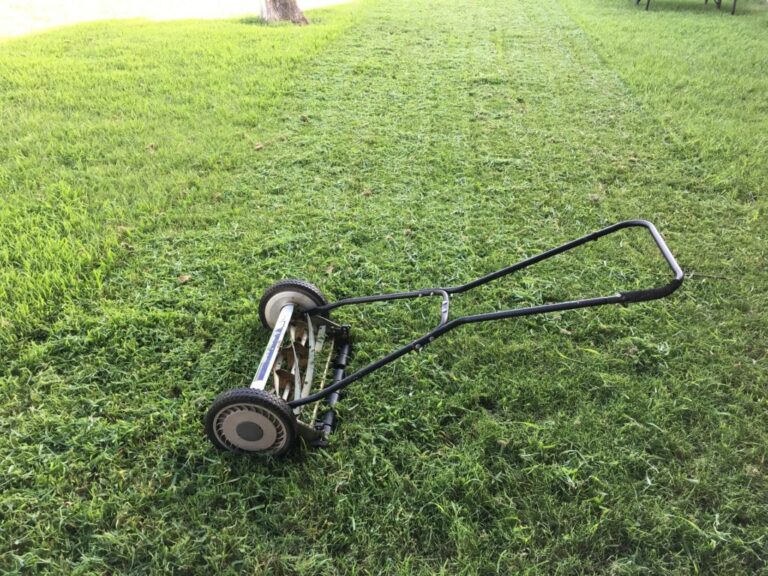Table of Contents
It’s happened to the best of us. We’ve removed a tree from our yard, thinking it would be an easy task. But once the tree is gone, we’re left with a big hole in our lawn. So, what do you do? You reseed your lawn.
Now, reseeding your lawn may just be easier said than done, so we thought to ourselves – how ’bout we make a little guide to help you guys out? And, we sure did. Let’s check it out!
Remove The Stump And The Roots
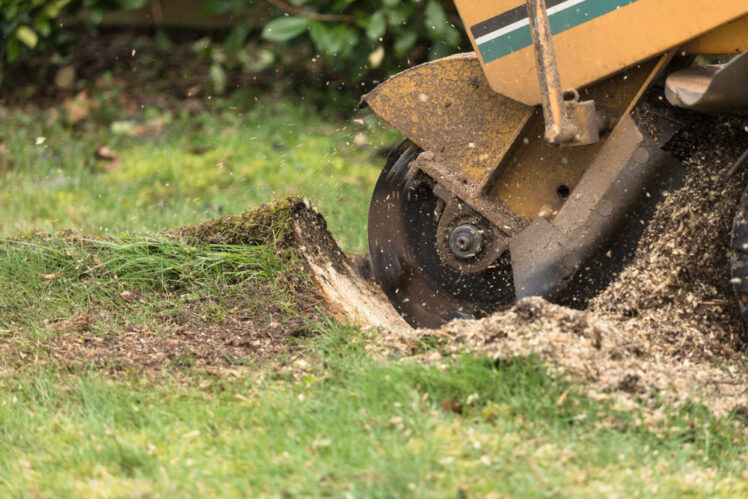
Since you’ve cut down the tree, there’s a good chance you’re left with a stump and some mighty roots underneath the surface. The first step to reseeding your lawn is removing the stump, as well as removing any remaining roots from where the tree was.
You can remove the stump with a stump grinder. You can usually rent one of these from your local hardware store or a tree removal service. As for the roots, you’ll want to use a shovel to dig them up. This job might be time-consuming and you might wake up tomorrow with sore muscles, but it will be worth it.
Remove Any Debris
After you’ve removed the tree “leftovers”, you’ll want to rake up any debris that may be left behind. This includes leaves, twigs, wood chips left from grinding and any other small pieces of debris that you can find.
While it might seem like some of those may be a good fertilizer for your upcoming PGA-tour-like lawn, it’s probably best you don’t leave them there. We don’t mind leaving leaves to rot during the winter and fertility the soil a bit for the spring, but in this case, it’s better if you keep things clean.
Level The Soil
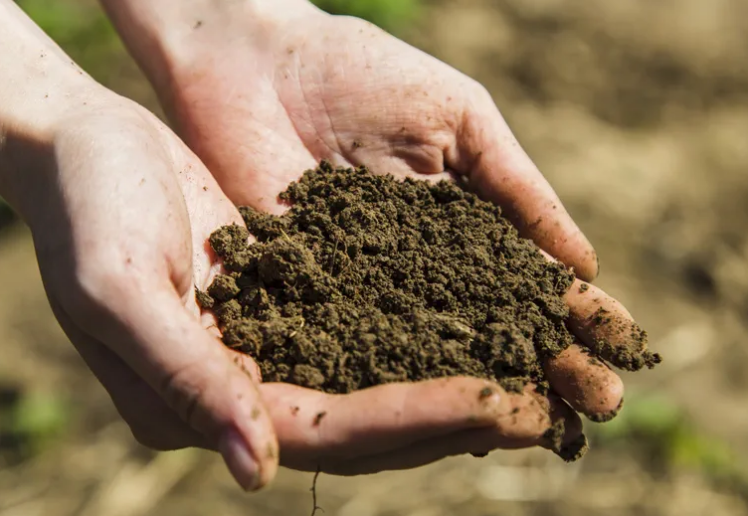
Once the stump and roots are gone, you’ll need to level out the hole so that it’s even with the rest of your lawn. We’re guessing you don’t want a crater in your backyard, right? So, grab a shovel and put the soil back in.
As for leveling, you can do this by tamping down the soil with your feet, with a shovel or by using a roller. It shouldn’t take long – an hour at most.
Aerate The Soil
Once you’ve done all of the previous tasks – it’s time to aerate the soil. This will help loosen up the compacted soil (a consequence of large tree roots and levelling) and allow for better drainage and more fertile soil.
You can use a hand-held garden fork for this task. Simply insert the tines of the fork into the ground and give it a few good stomps to aerate the soil. This should help your new lawn really take and grow strong.
However, if you really want to do this properly, we’d suggest calling up a professional service as they use plug aerators that really get the job done. So, if that’s something that sounds interesting to you, go now and book your professional soil aerator.
Add Topsoil
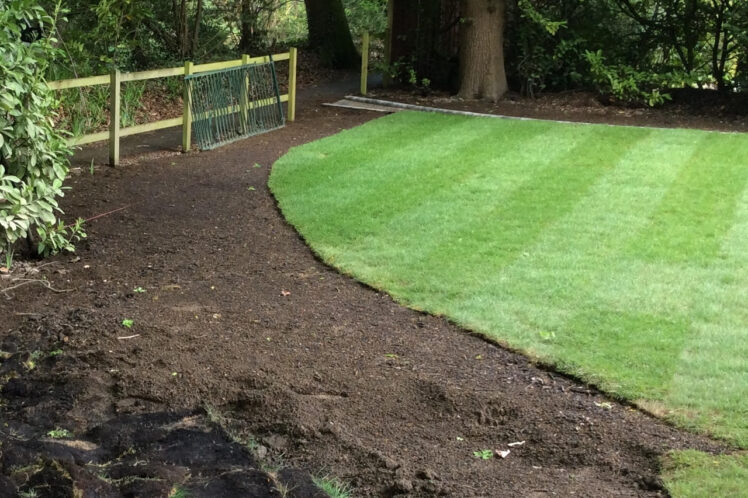
Once you’ve leveled the soil, you might find that the quality of the soil isn’t all that great. In this case, you can add some topsoil to the hole before reseeding. This will help improve drainage and make sure your new lawn has all the nutrients it needs to grow strong.
How much topsoil you need will depend on the quality of your existing soil, but, a general rule of thumb is to use about four inches if you want a nice green turf. However, not everyone will need this much. Sometimes, an inch or two will be more than enough.
Fertilize
Once the topsoil is in place, you’ll need to add some fertilizer. A general all-purpose fertilizer will do the trick. You can find these at any garden center or hardware store.
The amount of fertilizer you’ll need will depend on the size of your lawn and the type of fertilizer you’re using. However, as a general rule of thumb, you’ll want to use about a pound per 1,000 square feet.
Lay Down The Seed
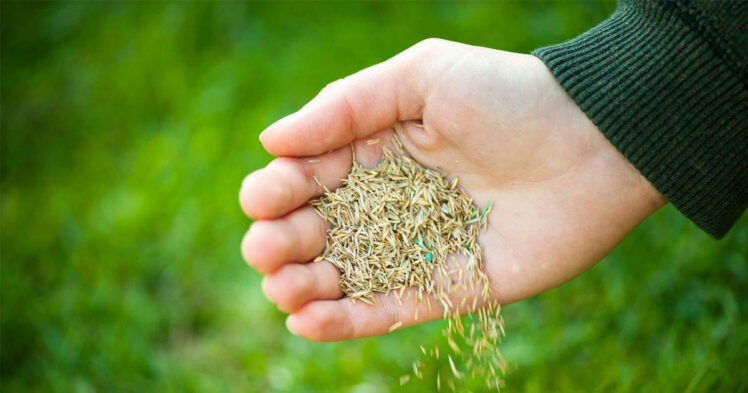
Now it’s time to actually sow the grass seed. You can do this by hand or with a seed spreader. If you’re doing it by hand, just sprinkle the seed evenly over the area. If you’re using a seed spreader, make sure to set it to the appropriate setting for your type of grass seed.
Once the seed is down, you’ll want to rake it in so that it’s covered by a thin layer of soil. This will help protect the seed and encourage germination.
Water The Soil
Now that the seed is down, it’s time to water. The general rule of thumb is to water the soil just enough to keep it moist. You don’t want mud or soggy dirt. That won’t help the greens grows. So, basically, you’ll want to water the new lawn two or three times a day for the first week or so. After that, you can reduce watering to once a day and just see how it progresses.
Wait It Out
One of the final steps is to wait patiently for your grass to grow. It will take about 2-3 weeks for the grass to start growing, and 6-8 weeks for it to be fully grown. This may seem like a long time, but it really isn’t. And, once it’s done, you’ll have a brand new lawn that will be the focal point of your backyard.
Mow When The Grass Is Ready
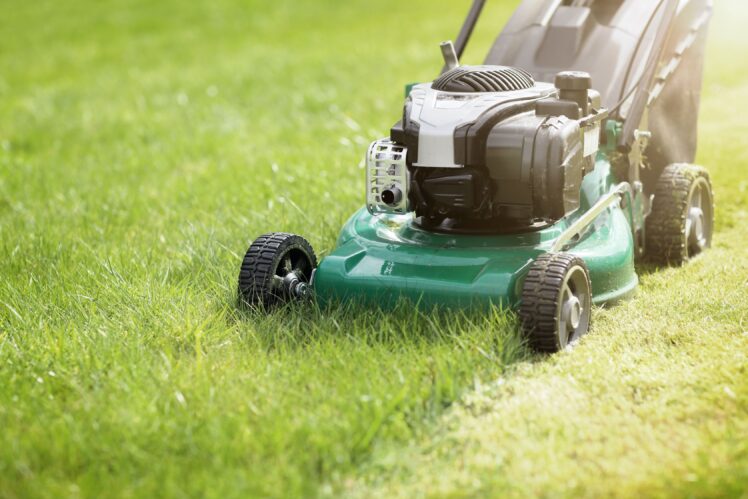
After, and only after your lawn has properly grown in, you can start mowing it. Until then, just let it be.
As for mowing, you’ll want to set the blade on your lawnmower to about two and a half inches. This will help the grass stay healthy and prevent it from getting too stressed out. Once you’ve done that, just mow as you normally would.
Conclusion
So, there you have it – everything you need to know about reseeding your lawn after removing a tree. Just follow these simple steps and you’ll have a beautiful lush, green lawn in no time.
We’re sure these simple steps will help you reseed your lawn and get it looking great in no time.
So, what are you waiting for? Get out there and start reseeding!

